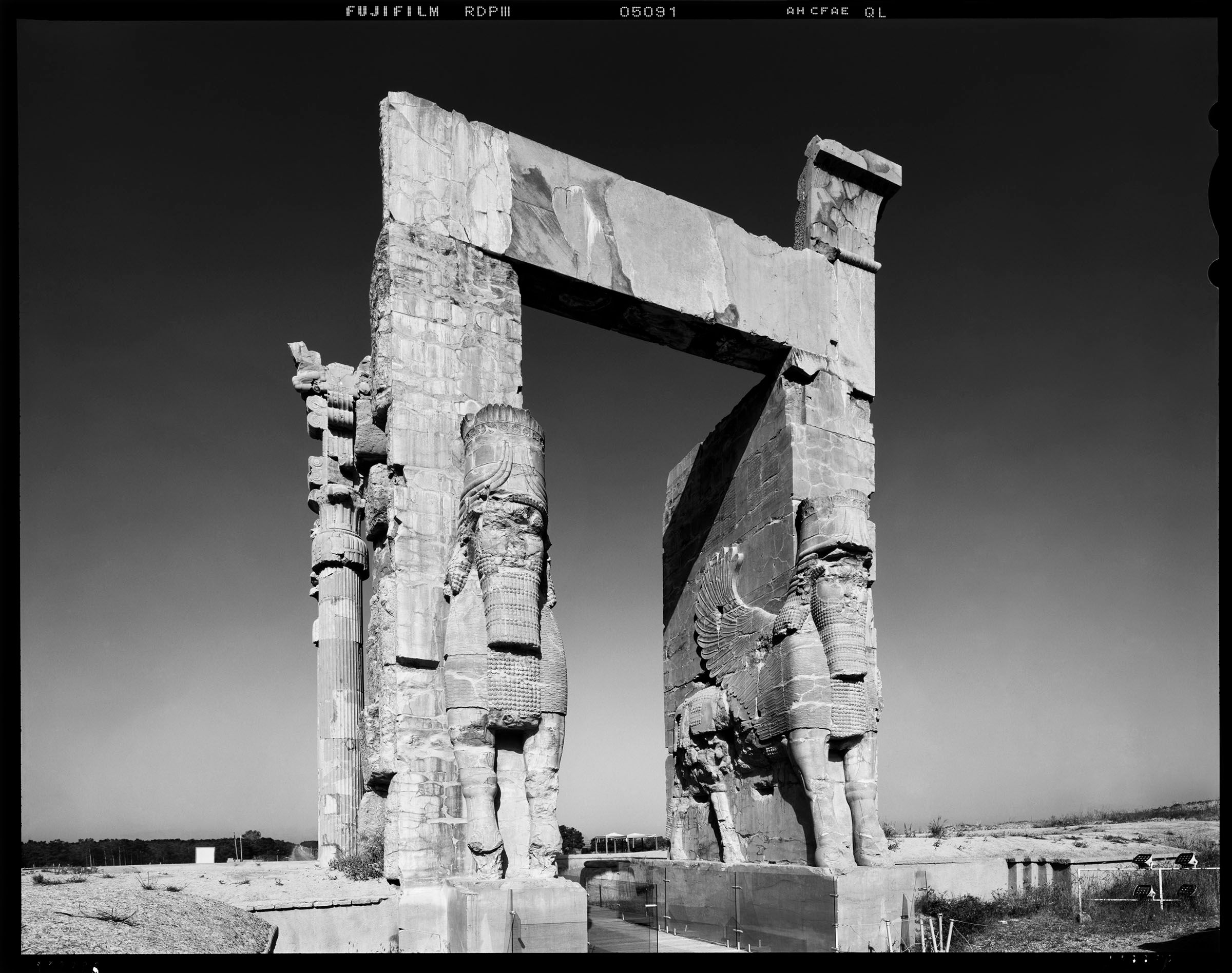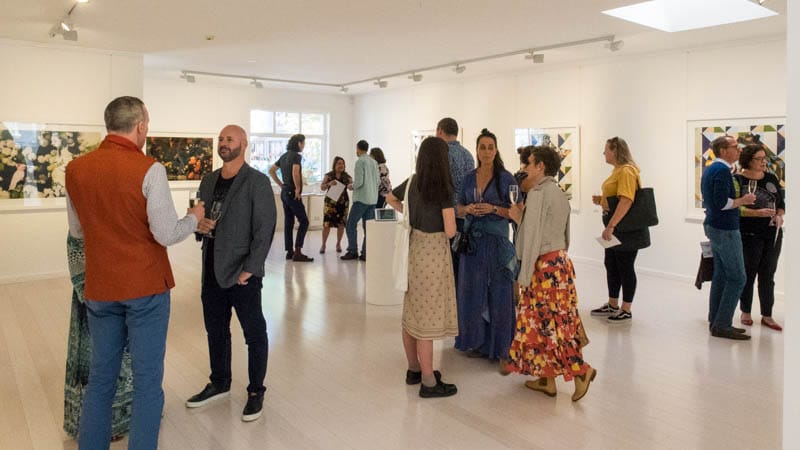Architecture of ancient Persia / Iran




In 2014 and 2015, Sydney-based photographer Rod Sainty travelled extensively throughout modern-day Iran to locate and photograph the iconic architecture and monuments of ancient Persia. Rod sought to document these compelling structures in the most realistic manner he could muster, using a modern large format view camera specialized for architecture and state-of-the-art large format lenses, loaded with traditional 4×5 inch sheet film. In this day and age, travelling internationally with large format cameras and lenses and 4×5 sheet film is, let’s say, anachronistic.
Through a collaboration with master printer Chris Reid, owner of Blanco Negro in Sydney, Rod presents an exhibition of exquisite hand-crafted archival black and white photographs printed on a particularly silver-rich photographic paper. Colour and black and white digital prints are also available at lower cost. While the digital prints are fantastic and richly detailed, the hand-crafted silver prints made directly from the negatives are exquisite and must be seen in person to be appreciated.
Architecture of ancient Persia / Iran by Rod Sainty
In 2014 and 2015, Sydney-based photographer Rod Sainty travelled extensively throughout modern-day Iran to locate and photograph the iconic architecture and monuments of ancient Persia. Through a collaboration with master printer Chris Reid, owner of Blanco Negro in Sydney, Rod presents an exhibition of exquisite hand-crafted archival black and white photographs printed on a particularly silver-rich photographic paper. Colour and black and white digital prints are also available at lower cost. While the digital prints are fantastic and richly detailed, the hand-crafted silver prints made directly from the negatives are exquisite and must be seen in person to be appreciated.
One inspiration for Rod’s photographic survey was the challenge to revisit sites photographed in the 1920s by the German archaeologist Ernst Herzfeld and in the early 1930s by the English traveller and author of The Road to Oxiana, Robert Byron.
The starting point for the survey was Persepolis, the famous ceremonial palace complex of the first Persian Empire, located in central south Iran. From Persepolis, Rod journeyed outwards – and upwards through time – to the architectural remnants of later Persian empires scattered across the west, south and north-east regions of the country.
A few examples: In the north-west of Iran stands one of the country’s architectural jewels, the huge elevated domed tomb of Il-khan Oljaitu, a successor of Genghis Khan. Instead of tyranny, Oljaitu brought artisans and intellectuals to a windswept high plateau on the ancient silk route to found a new capital of learning and academic excellence. The third largest brick dome in the world, its engineering is said to have paved the way for the Taj Mahal. In the north-east of Iran stand a series of fantastic monumental tomb towers, lonely sentinels through time to regional rulers and religious leaders. The tallest, at 72m, Gonbad-e Qabus is said to be the world’s tallest brick tower, yet it dates from 1006 and has exquisite razor-sharp flanges that cast ever-changing shadows across its cylindrical surface.
For Rod, the adventure became a quest to document these compelling structures in the most realistic manner he could muster, using a large format camera – the classic tool for architectural photography – equipped with state-of-the-art lenses and 4×5 inch sheet film. In this day and age, travelling internationally with large format cameras and 4×5 sheet film is, let’s say, anachronistic.
His second goal, that of having a master printer produce a series of outstanding photographic prints on beautiful silver-rich photographic paper, dictated that he photograph on black and white negative film in addition to colour.
Relatively few foreigners attempt to travel independently within Iran. This was the most realistic means of transporting the required equipment, which included the view camera and tripod, two Eskys containing sheet film, and the 30 sheet film holders that had to be loaded beforehand in the late night darkness of hotel bathrooms. Iranians who Rod spoke to beforehand said he shouldn’t attempt it, but he navigated to remote sites using inadequate maps, friendly locals and a GPS unit that lied as often as it told the truth. In the remote north-east foreigners are rarely seen, let alone drive cars, and in one town Rod was detained by local police for suspected theft of the vehicle until an English-speaking student arrived home on leave and could untangle the situation. Crucially, however, travelling independently enabled Rod to seek out, wait around for or return to catch the best available light for each photograph.
The lasting reward of those temporary inconveniences is a set of classic photographic portraits of some of the most iconic, most amazing and most lonely monuments of ancient Persia. And Rod takes satisfaction in knowing that few people have photographed these iconic sites with such equipment before, and that it is likely that few if any will do so again.
The photographs are available for purchase either as archival silver gelatin prints of exquisite quality hand-crafted from the original negatives by a master printer, or lower cost digital prints produced from a high resolution scan of the negative or transparency.
The hand-crafted archival black and white photographs are printed on a particularly silver-rich traditional fibre-based photographic paper. Each print is the result of a number of trials, and has been selenium toned by hand. No two prints are exactly alike. Naturally, these premium hand-crafted prints command a premium price.
The colour and black and white digital prints are available at a reduced price relative to the hand-crafted prints. Rod had the original negatives and transparencies scanned by Shayne Pearce, owner of Shayne Pearce Photographic Services, using his high-end Heidelberg scanner. The scan file was either exposed onto long-lasting colour photographic paper or printed onto fine quality cotton rag paper.
Enquiries are welcome.
Technical aspects
Rod explained the technical aspects thus: “My intention is that the photographs replicate for the viewer, as fully as possible, the dramatic up-close perspective and sense of awe that I experienced myself. The first key ingredient is that the structure should be photographed from close range, just as you yourself would view it. We don’t observe these things from afar, instead, we walk right on up to them until they fill our view. In this situation, however, a photographer has a real challenge. Even equipped with a wide angle lens, an ordinary rigid-bodied camera cannot frame the building or structure without imposing exaggerated and unrealistic convergence and tilting effects upon the image when it is pointed up. Those distortions break the illusion of reality that brings power to a photograph. To avoid them, the camera must be kept horizontal, but of course then the building doesn’t fit within the frame. If you attempt to move back far enough, and can, you usually find the subject becomes obscured by walls or trees or other buildings. And moving back that far defeats our intent and greatly diminishes the visual impact of the photograph. It also opens up dead space in the foreground, which photographic cliché instructs us to fill with a foreground rock or flower. But who, really, is interested in that foreground rock or flower?
The solution I brought to the situation was a so-called technical camera made by the Dutch firm Cambo, together with some of Schneider’s ground-breaking Super-Angulon XL (eXtra Large image circle) wide angle lenses for large format photography. The Cambo Wide DS is a modern precision CNC-machined iteration of the 4×5 inch view camera, which is the classic tool of architectural photography. The Super-Angulon XL lenses are remarkable for their very large image circles and enable taller structures to be imaged at close range.
In use, the camera and lens are kept horizontal using orthogonal bubble levels to avoid any convergence or tilting. To compose the image on the viewscreen, the lens is shifted upwards and sideways on panels that slide parallel to the film plane, to bring the the top of the building – within the otherwise unseen outer portion of the image circle – downward into the frame and placed exactly where we need it. Along with just the right positioning of the camera and choice of lens, one can create an image having the realistic perspective and vertical verticals that we want, with none of the empty space in front that we don’t want. At that point, a loaded film holder is inserted behind the viewscreen, the protective cover on the inside slid back to expose the 4×5 inch sheet of film, and the lens shutter is operated.
After 30 plus years of photography with ordinary rigid cameras and always getting buildings that tilted, the first time I experienced this style of photography I was hooked; there was no going back. These tools allow me to render large impressive structures at close range and to replicate much of the feeling of wow that I experienced. As a plus, the large size of the film negative provides excellent resolution. While the digital prints are fantastic and richly detailed, the hand-crafted silver prints made directly from the negatives are exquisite and must be seen in person to be appreciated.”
One final note: No picture elements have been removed from the photographs, nor has the sky been altered from what was rendered by the lenses and film. Within the confines of the frame, you see what was there.

List your exhibition or photography event on our site to reach out to the Australian photographic community.

